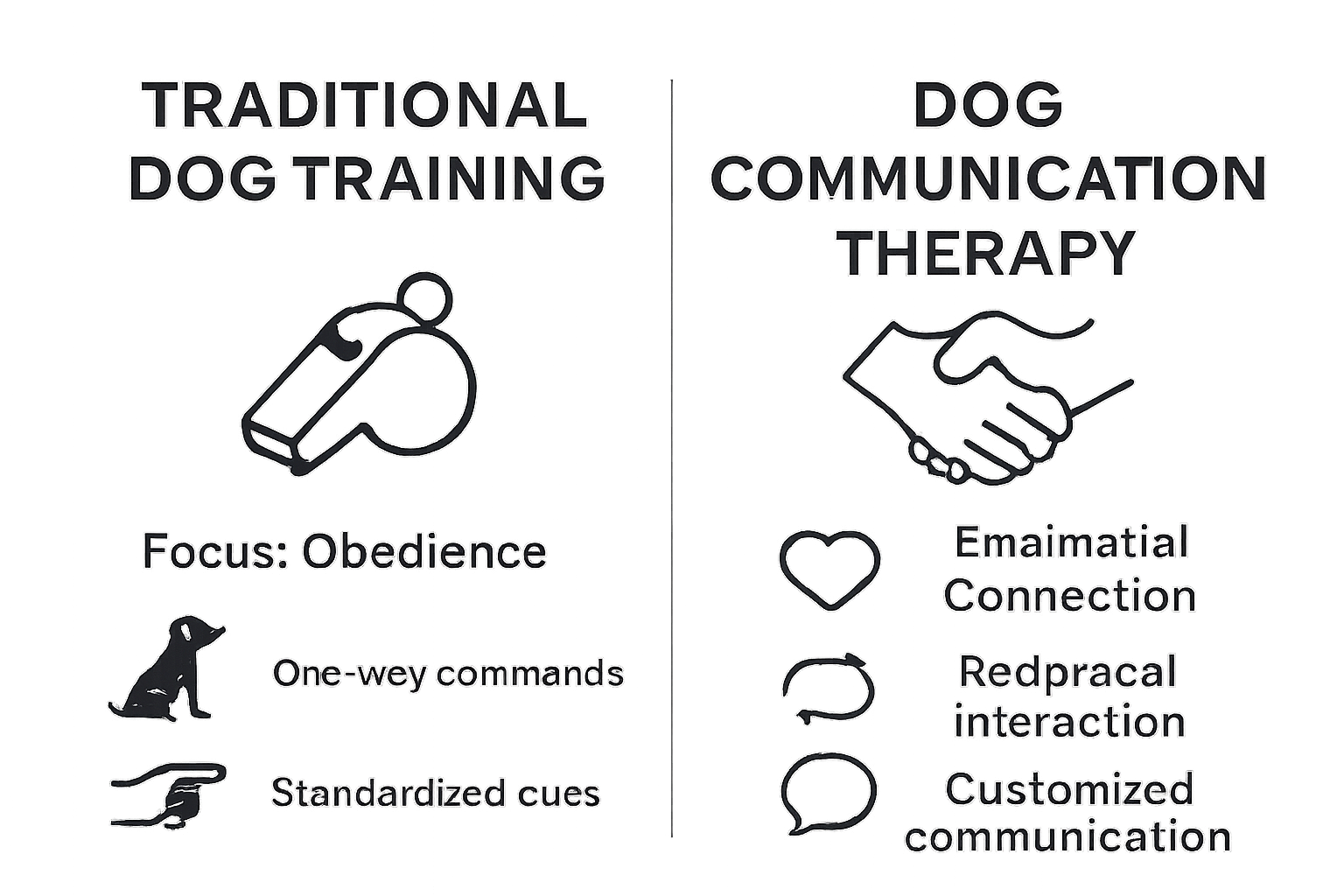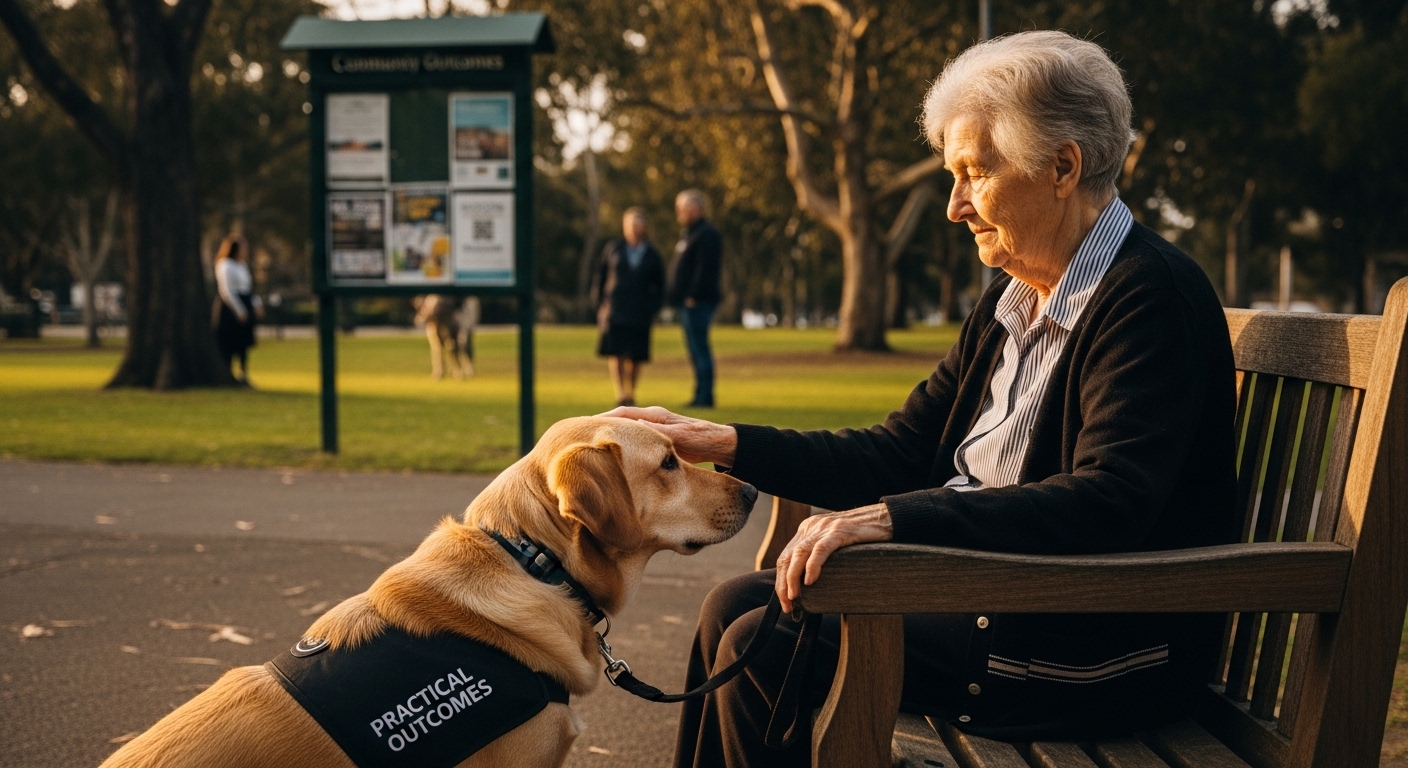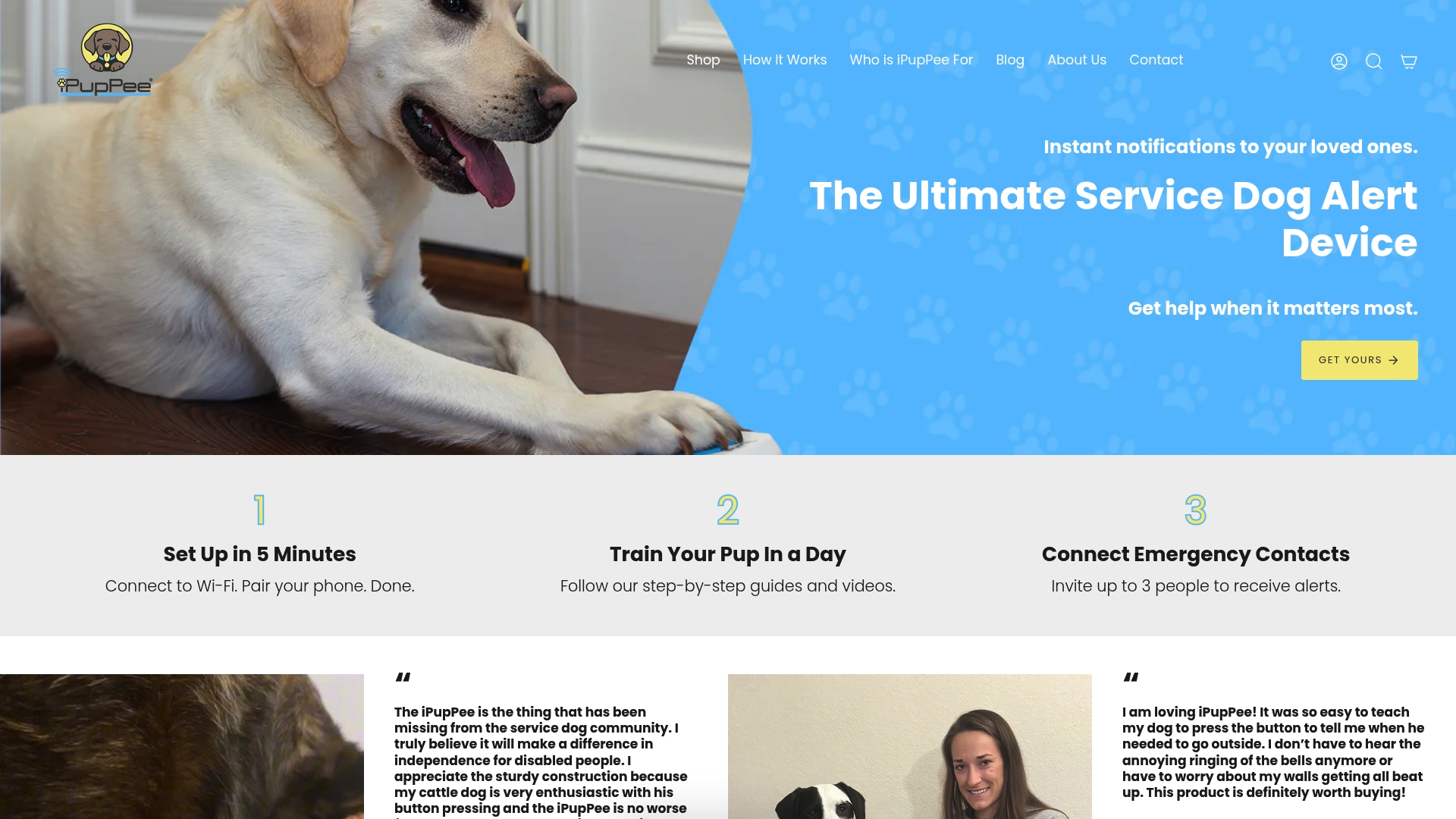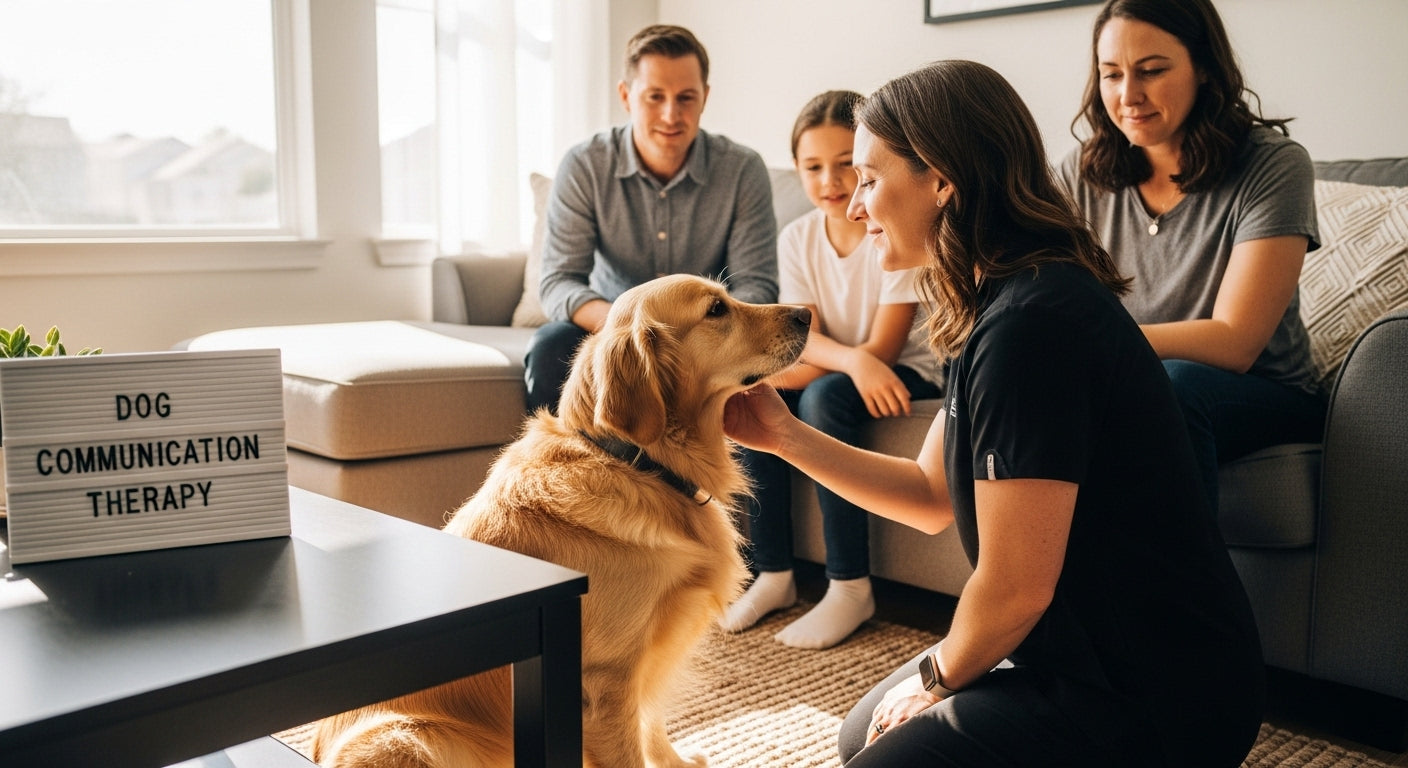Dog communication therapy is changing the way people interact with their canine companions. While most training methods focus on teaching dogs commands, this approach digs much deeper and connects on an emotional level. In fact, studies show that specialized communication strategies can greatly lower stress and anxiety in dogs, encouraging a stronger bond between pets and their people. It might sound like something only professionals use, but it is unlocking breakthroughs for everyday dog owners and their furry friends.
Table of Contents
- What Is Dog Communication Therapy?
- The Importance Of Effective Communication With Dogs
- Key Principles Behind Dog Communication Therapy
- How Dog Communication Therapy Benefits Dogs And Owners
- Real-World Applications Of Dog Communication Therapy
Quick Summary
| Takeaway | Explanation |
|---|---|
| Understanding dog communication is essential | Effective communication fosters trust and reduces behavioral problems in dogs. |
| Emphasize empathy in interactions | Dogs recognize emotional cues, leading to deeper connections and reduced anxiety. |
| Focus on holistic behavior understanding | Dogs communicate through body language and vocalizations that reflect their emotional states. |
| Address underlying issues for behavioral changes | Understanding emotional motivations helps prevent aggression and other negative behaviors. |
| Apply communication strategies in real-world scenarios | This approach aids rescue, service, and special needs dogs, enhancing their interactions. |
What is Dog Communication Therapy?
Dog communication therapy is a specialized approach that helps improve understanding and interaction between humans and their canine companions through targeted communication techniques and behavioral interventions. This innovative method goes beyond traditional training by focusing on creating deeper, more meaningful connections that address both emotional and practical communication challenges.
The Core Principles of Dog Communication Therapy
At its heart, dog communication therapy recognizes that dogs have complex emotional lives and unique ways of expressing themselves. Our guide on dog button communication explores how advanced communication strategies can bridge the gap between human and canine understanding. The approach involves several key elements:
- Interpreting subtle body language signals
- Understanding canine vocalization patterns
- Developing reciprocal communication techniques
- Addressing underlying behavioral motivations
Unlike traditional obedience training, dog communication therapy seeks to establish a collaborative relationship where dogs feel heard and understood.
 According to research from the American Veterinary Medical Association, effective communication strategies can significantly reduce stress and improve overall behavioral health in dogs.
According to research from the American Veterinary Medical Association, effective communication strategies can significantly reduce stress and improve overall behavioral health in dogs.
Therapeutic Applications and Benefits
Dog communication therapy proves especially valuable for specific scenarios such as:
- Helping rescue dogs overcome past traumas
- Supporting service dogs in developing stronger working relationships
- Assisting dogs with anxiety or behavioral challenges
- Enhancing communication for senior pets or dogs with special needs
By creating a supportive environment that prioritizes mutual understanding, dog communication therapy transforms how humans and dogs interact. The goal is not just compliance, but genuine connection and emotional attunement that respects the unique personality and experiences of each individual dog.
The Importance of Effective Communication with Dogs
Effective communication between humans and dogs transcends basic commands, forming the foundation of a healthy, trusting relationship. Understanding how to communicate clearly and compassionately helps prevent misunderstandings, reduces behavioral issues, and creates a more harmonious living environment.
Emotional and Psychological Impact
Our essential communication tips guide highlights the profound psychological connections between dogs and their owners. Communication is not just about giving instructions but about building mutual understanding. According to research from the National Institutes of Health, effective communication significantly influences a dog’s emotional well-being and stress levels.
Key psychological benefits of clear communication include:
- Reducing anxiety and uncertainty
- Building trust and emotional security
- Enhancing the human-animal bond
- Promoting positive behavioral responses
Preventing Behavioral Challenges
Miscommunication can lead to significant behavioral problems. Dogs who do not understand expectations or feel misunderstood may develop:
- Aggressive responses
- Excessive barking
- Destructive behaviors
- Withdrawal or fear-based reactions
By developing a nuanced communication approach, owners can preempt these challenges, creating a supportive environment that helps dogs feel secure and understood.
Effective communication involves reading body language, understanding vocal cues, and responding consistently and empathetically to a dog’s emotional state.
Key Principles Behind Dog Communication Therapy
Dog communication therapy is grounded in a comprehensive understanding of canine behavior, psychology, and interpersonal dynamics. This approach goes beyond traditional training methods by emphasizing empathy, mutual respect, and nuanced communication strategies that recognize dogs as intelligent, emotionally complex beings.
Holistic Understanding of Canine Behavior
At the core of dog communication therapy is a holistic view of canine communication. Our top tips for pet communication underscore the importance of recognizing that dogs communicate through multiple channels. According to research from the Journal of Veterinary Behavior, effective communication involves understanding:
- Subtle body language signals
- Vocal tone and pitch variations
- Contextual environmental cues
- Individual emotional states
Empathy and Emotional Intelligence
Communication therapy emphasizes developing emotional intelligence in both dogs and their human companions. This principle recognizes that dogs experience complex emotions and require a compassionate, nuanced approach to interaction. Key aspects include:
- Recognizing stress signals
- Responding to emotional needs
- Creating a safe and supportive environment
- Developing trust through consistent, predictable interactions
By prioritizing emotional connection over strict obedience, dog communication therapy transforms the relationship from a hierarchical command structure to a collaborative partnership.
The following table organizes key principles of dog communication therapy, outlining specific characteristics and their impacts on the human-canine relationship.
| Principle | Characteristic | Impact on Relationship |
|---|---|---|
| Holistic Understanding | Considers body language and vocalizations | Builds nuanced two-way understanding |
| Empathy and Emotional Intelligence | Recognizes and responds to canine emotions | Strengthens trust and reduces stress |
| Reciprocal Communication | Promotes two-way interactions | Encourages cooperation and connection |
| Addressing Underlying Motivation | Focuses on root causes of behavior | Enables lasting behavioral change |
| The goal is to create a deep, meaningful connection where both dog and human feel understood, respected, and emotionally supported. |
How Dog Communication Therapy Benefits Dogs and Owners
Dog communication therapy offers transformative advantages that extend far beyond traditional training approaches, creating profound positive impacts for both canine companions and their human caregivers. By establishing deeper understanding and more meaningful connections, this therapeutic approach revolutionizes interpersonal dynamics.
Psychological and Emotional Benefits
Top dog training benefits reveal the extensive psychological advantages of communication therapy. According to research from the American Veterinary Medical Association, this approach significantly reduces stress and anxiety for both dogs and owners. The psychological benefits include:
- Enhanced mutual trust
- Reduced behavioral anxiety
- Improved emotional regulation
- Strengthened human-animal bond
Practical Outcomes and Relationship Transformation
Communication therapy produces tangible, real-world improvements in dog behavior and owner satisfaction. By focusing on understanding underlying emotional motivations, owners can address challenges more effectively and compassionately.
 Key practical benefits encompass:
Key practical benefits encompass:
- Decreased aggressive or destructive behaviors
- More responsive and cooperative interactions
- Greater predictability in dog reactions
- Improved overall household harmony
Ultimately, dog communication therapy transcends traditional training by creating a collaborative partnership based on mutual respect, empathy, and deep understanding. This approach empowers both dogs and owners to develop more nuanced, supportive, and fulfilling relationships that honor the emotional complexity of interspecies communication.
Real-World Applications of Dog Communication Therapy
Dog communication therapy transcends theoretical concepts, offering practical solutions across diverse scenarios where understanding and empathy can transform challenging behavioral patterns. By applying specialized communication techniques, professionals and pet owners can address complex canine interactions with precision and compassion.
Supporting Special Needs and Service Dogs
Our training therapy dogs guide highlights the critical role of communication therapy in service dog environments. According to research from the National Institutes of Health, communication therapy proves particularly valuable in rehabilitating and supporting dogs with unique requirements:
- Assisting dogs with sensory processing challenges
- Developing advanced communication strategies for assistance dogs
- Helping dogs overcome traumatic background experiences
- Creating adaptive communication techniques for dogs with physical limitations
Rehabilitation and Behavioral Intervention
Communication therapy offers targeted interventions for dogs experiencing behavioral challenges, providing structured approaches to understanding and modifying complex emotional responses. Key rehabilitation applications include:
- Addressing anxiety and fear-based reactions
- Mitigating aggressive behavioral patterns
- Supporting rescue dogs with attachment difficulties
- Helping senior dogs navigate cognitive changes
By prioritizing empathetic, nuanced communication strategies, dog communication therapy transforms potential challenges into opportunities for growth, understanding, and deeper interspecies connection. The approach recognizes that each dog has a unique emotional landscape requiring personalized, compassionate intervention.
Strengthen Your Bond with Proven Dog Communication Tools
Are you struggling to truly understand your dog’s needs or feeling frustrated by miscommunication? This article explains how dog communication therapy can break down barriers, reduce stress, and create real connection between you and your pet. Many owners know the pain of seeing their dog act out or withdraw due to confusion or lack of clear signals. Imagine transforming your daily experience into one built on trust, confidence, and safety using proven communication devices and training support.

Discover how the iPupPee device can help you put the principles of dog communication therapy into action. This easy-to-use solution lets your dog express essential needs with a simple touch, which is especially helpful for service dog handlers, families with new puppies, seniors, and those living alone. Explore real success stories and product details on our main site and learn more about how it supports a stress-free, harmonious relationship. Start changing how you and your dog communicate today for a safer, happier tomorrow.
Frequently Asked Questions
What is dog communication therapy?
Dog communication therapy is a specialized approach aimed at improving the understanding and interaction between humans and their dogs. It utilizes targeted communication techniques and behavioral interventions to foster deeper connections and address emotional and practical communication challenges.
How does dog communication therapy differ from traditional training?
Unlike traditional obedience training, which focuses on command compliance, dog communication therapy emphasizes collaboration and mutual understanding. It aims to create a partnership where dogs feel heard and understood, recognizing their emotional complexity.
To help clarify the differences between traditional dog training and dog communication therapy, the following table compares their core focus, goals, and outcomes.
| Approach | Core Focus | Primary Goal | Outcome for Human-Dog Bond |
|---|---|---|---|
| Traditional Dog Training | Command-based instruction | Teach obedience and control | Structured but hierarchical |
| Dog Communication Therapy | Emotional and behavioral communication | Foster mutual understanding and trust | Deeper, collaborative partnership |
What are the benefits of dog communication therapy for dogs?
Dog communication therapy helps improve emotional well-being, reduces anxiety, and enhances the human-animal bond. It can also aid in addressing behavioral challenges and support dogs with specific needs, such as rescue or service dogs.
Can communication therapy help with behavioral issues in dogs?
Yes, communication therapy can effectively address behavioral challenges in dogs. By fostering better understanding, it helps reduce anxiety, aggression, and destructive behaviors, and promotes a more harmonious living environment.
Recommended
- Dog Training and Bonding: Build Unbreakable Connections in 2025 – iPupPee
- Dog Button Communication: Guide for Owners and Trainers 2025 – iPupPee
- Top Tips for Pet Communication in 2025: Simple Methods for Success – iPupPee
- 7 Essential Communication Tips for Dog Owners – iPupPee
- Understanding Types of Dogs and Breeds for Everyone – FunLifeNow
- Engaging Activities to Prevent Dog Boredom and Boost Mental Stimulatio – Yappyboo

